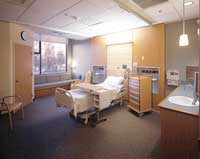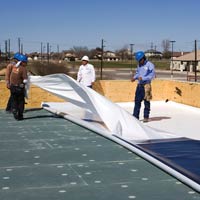view all Case Studies
Wireless Communications Upgrade Hospital Without Disruption

At St. Anthony’s Hospital in Oklahoma City, Siemens Building Technologies Inc., recently demonstrated the potential of wireless building controls in hospitals. Without disrupting patient care or hospital operations, the
Apogee® Wireless Field Level Network solution helped provide a more flexible and reliable system.
January 17, 2008 -
Facilities Management
At St. Anthony’s Hospital in Oklahoma City, Siemens Building Technologies Inc., recently demonstrated the potential of wireless building controls in hospitals. Without disrupting patient care or hospital operations, the Apogee® Wireless Field Level Network solution helped provide a more flexible and reliable system.
St. Anthony, one of the largest hospitals in Oklahoma City, needed critical updates two years ago to maintain a comfortable environment for its occupants. Upgrading the system also would improve operational efficiency, saving the hospital costly maintenance fees incurred due to outdated equipment.
Siemens understood the necessary changes for St. Anthony. Those changes included replacing heating, ventilation, and air conditioning controls in patient-care areas, isolation rooms, surgical suites, and the mechanical plant. Acknowledging the unique environment of a hospital, Siemens approached the project with a wireless solution in mind. Apogee Wireless now provides the hospital with a low-fault and unobtrusive-control communication system.
“Working with Siemens on upgrading our building controls protects and increases the value of our investment in our facility,” says John Mobley, the hospital’s facilities manager.
One of the greatest benefits of a wireless solution is its potential to reduce the amount of cable and the number of ceiling penetrations, which lowers the amount of airborne contamination and other risks associated with construction.
Despite the physical obstructions in health care facilities, Siemens wireless mesh technology helps maintain network integrity because it creates multiple redundant paths of communication. Mesh networks are inherently self-healing, so users don’t have to worry about losing communication with control devices across the building automation system. Wireless solutions also can limit maintenance costs associated with troubleshooting because there are no physical-communications media that can be accidentally damaged.
“Transitioning to wireless controls was unlike any other construction project I’ve experienced at St. Anthony,” Mobley says. “It was not invasive to our operations and has resulted in improved conditions for the rest of the staff and, most importantly, our patients and their families.”
Next
Read next on FacilitiesNet












